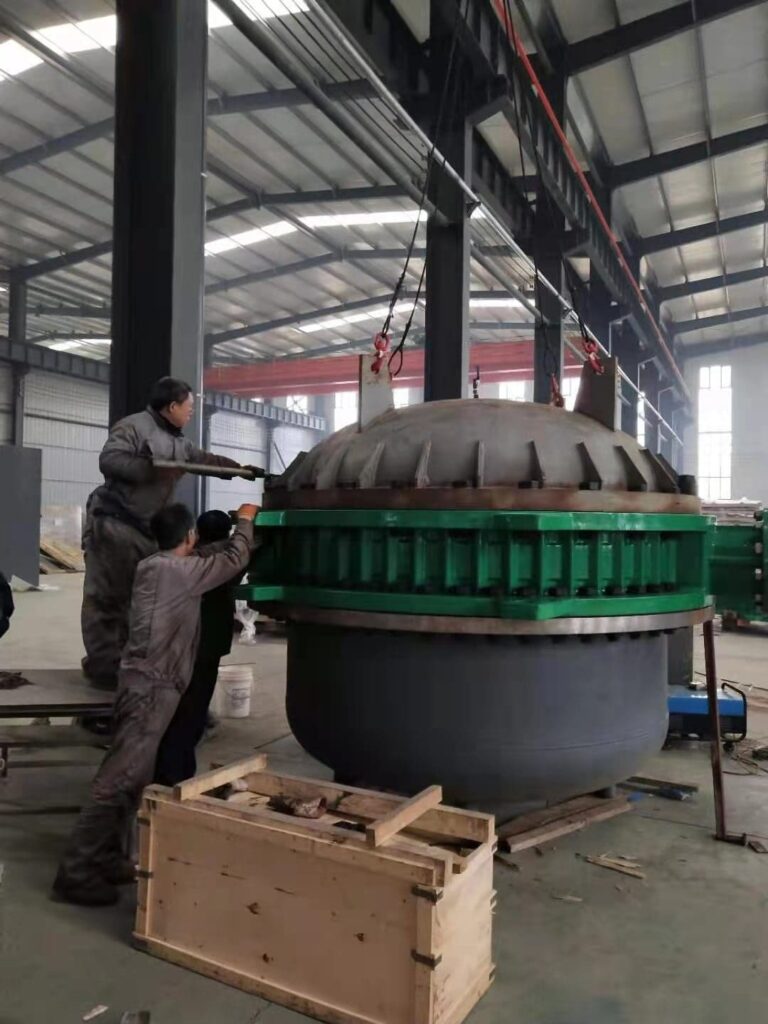Today, we talk about 2 Types industrial valve sealing type
The seal is also a very critical component in the valve. The sealing performance of the valve refers to the ability of each sealing part of the valve to prevent the leakage of the medium. It is the most important technical performance index of the valve.
Firstly, we have to know there are three sealing parts of the valve:
❶ The contact between the opening and closing parts and the two sealing surfaces of the valve seat;
❷ The fit between the packing and the valve stem and stuffing box;
❸ The connection between the valve body and the valve bonnet.
The previous leakage is called internal leakage, which is commonly referred to as lax closure, which will affect the ability of the valve to cut off the medium. For shut-off valves, internal leakage is not allowed.
The latter two leaks are called external leakage, that is, the medium leaks from the inside of the valve to the outside of the valve. Leakage will cause material loss, pollute the environment, and even cause accidents in severe cases. For flammable, explosive, toxic or radioactive media, leakage is not allowed, so the valve must have reliable sealing performance.
Solving the sealing problem is not a trivial matter. Most of the problems occur here because the valve runs, leaks, drips, and leaks. Below we will look at the dynamic sealing and static sealing of the valve.
Come to NO1: Dynamic seal
Valve dynamic seal, mainly refers to the valve stem seal. Preventing the medium in the valve from leaking with the movement of the valve stem is the central issue of the valve dynamic sealing.
1. Stuffing box form
The valve is dynamically sealed, mainly based on the stuffing box. The basic form of stuffing box is:
❶ Gland type
This is the most used form. The unified form can be distinguished in many details. For example, from the perspective of compression bolts, it can be divided into T-shaped bolts (used for low pressure valves with pressure ≤ 16 kg/cm²), stud bolts, and swivel bolts. From the gland, it can be divided into integral type and combined type.
❷ Compression nut type
This type of form has small dimensions, but the pressing force is limited, so it is only used for small valves.
2. Packing
In the stuffing box, the stuffing is in direct contact with the valve stem and is covered with the stuffing box to prevent the medium from leaking. The filler has the following requirements:
❶ Good sealing
❷ Corrosion resistance
❸ Small friction coefficient
❹ Comply with medium temperature and pressure
Frequently used fillers are:
❶ Asbestos packing: Asbestos packing has good temperature resistance and corrosion resistance, but when used separately, the sealing effect is not safe, and it is always impregnated or added with other materials. Oil-impregnated asbestos packing: There are two basic structural forms, one is twisted, and the other is braided. It can be divided into round and square.
❷ PTFE braided packing: the PTFE tape is braided into packing, which has excellent corrosion resistance and can be used for cryogenic media.
❸ Rubber O-ring: Excellent sealing effect under low pressure. The use temperature is restricted, such as natural rubber can only be used at 60°C.
❹ Plastic molding filler: Generally, it is made into three pieces, but it can also be made into other shapes. The plastics used are mostly polytetrafluoroethylene.
In addition, for example, in a steam valve at 250°C, asbestos packing and lead rings are alternately stacked to reduce steam leakage; there are valves and the medium is frequently changed, such as the use of asbestos packing and PTFE tape. , The sealing effect is better. In order to reduce friction on the valve stem, where there are places, molybdenum disulfide (MOS2) or other lubricants can be added.
Requests are being made for novel fillers. For example, polyacrylonitrile fiber is impregnated with polytetrafluoroethylene emulsion, and after pre-oxidation, it is sintered and pressed in a mold to form a packing with excellent sealing performance; another example is a corrugated packing made of stainless steel sheet and asbestos, which can withstand high temperature and high pressure And erosion.
3. Bellows seal
The rapid growth of the chemical industry and the nuclear energy industry, the increase in flammable, explosive, highly toxic and radioactive materials, has imposed more stringent requirements on valve sealing. In some places, it is no longer possible to use packing seals, and a new form of sealing-bellows seals has occurred. This type of seal does not require packing, and is also called non-packing seal.
Both ends of the bellows are welded to other parts. When the valve stem is raised and lowered, the bellows expands and contracts, and the bellows does not leak by itself, and the medium cannot escape. To be safe, double seals with bellows and packing are often used.
Here! NO2: Static seal
What is static sealing?
Static seal usually refers to the seal between two static surfaces. The sealing method is mainly to use gaskets.
1. Gasket material
❶ Non-metallic materials: such as paper, hemp, cowhide, asbestos products, plastics, rubber, etc.
Paper, hemp, cowhide, etc., have pores and are easy to permeate, so they must be impregnated with oil, wax or other impermeable materials. Generally, valves are rarely used.
Asbestos products, there are asbestos belts, ropes, plates and asbestos rubber sheets. Among them, the asbestos rubber sheet has a compact structure, good pressure resistance, and good temperature resistance. The valve itself and the connection between the valve and the pipe flange are extremely common.
Plastic products have good corrosion resistance and are commonly used. Varieties include polyethylene, polypropylene, soft polyvinyl chloride, polytetrafluoroethylene, nylon 66, nylon 1010 and so on.
Rubber products are soft in nature, and various types of rubber have certain acid, alkali, oil and sea water resistance. Varieties include natural rubber, styrene butadiene rubber, nitrile rubber, neoprene rubber, isobutyl rubber, polyurethane rubber, fluorine rubber and so on.
❷ Metal materials: Generally speaking, metal materials have high strength and strong temperature resistance. But lead is not like this, it only takes the characteristics of its resistance to dilute sulfuric acid. Frequently used varieties are brass, copper, aluminum, low carbon steel, stainless steel, Monel, silver, nickel, etc.
❸ Composite materials: such as metal sheath (internal asbestos) washers, combined wave washers, surrounding entangled washers, etc.
2. Comm use of gasket performance
When using a valve, it is often the case that the original gasket is replaced. Common gaskets are: rubber flat washers, rubber O-rings, plastic flat washers, PTFE-covered washers, asbestos rubber washers, metal flat washers, metal special-shaped washers, metal wrap washers, wave washers, surrounding entangled washers, etc.
❶ Rubber flat washers: easy to deform and not difficult to compress, but they have poor pressure and temperature resistance. They are only used for low pressure and low temperature. Natural rubber has certain acid and alkali resistance, and the use temperature should not exceed 60°C; chloroprene rubber can also be resistant to certain acids and alkalis, and the use temperature is 80°C; nitrile rubber is oil-resistant and can be used up to 80°C; fluororubber has good corrosion resistance and resistance The temperature performance is also stronger than that of general rubber, and it can be used in 150℃ medium.
❷ Rubber O-shaped gaskets: the cross-sectional shape is a perfect circle, has a certain self-tightening effect, the sealing effect is better than flat gaskets, and the pressing force is smaller.
❸Plastic flat gaskets: The most important feature of plastics is good corrosion resistance, and most plastics have poor temperature resistance. PTFE is the crown of plastics, has excellent corrosion resistance, wide temperature resistance range, and can be used for a long time within -180℃~+200℃.
❹ Teflon-wrapped gaskets: to fully demonstrate the advantages of PTFE, and at the same time make up for its poor elasticity, and make Teflon-wrapped rubber or asbestos rubber gaskets. In this way, it has the same corrosion resistance as the PTFE flat gasket, but also has excellent elasticity, which enhances the sealing effect and reduces the pressing force.
❺ Asbestos rubber gasket: cut from asbestos rubber sheet. Its components are 60-80% asbestos and 10-20% rubber, filler, vulcanizing agent, etc. It has good heat resistance, cold resistance, chemical stability, abundant supply and low price. When used, the pressing force does not need to be large. It can adhere to metal, and it is best to be coated with a layer of graphite powder to avoid laborious disassembly.
❻Metal flat hot ring: lead, temperature resistance 100℃; aluminum 430℃; copper 315℃; low carbon steel 550℃; silver 650℃; nickel 810℃; Monel (nickel-copper) alloy 810℃, stainless steel 870℃. Among them, lead has poor pressure resistance, aluminum can withstand 64 kg/cm², and other materials can withstand high pressure.
❼ Metal anisotropic washer
Lens gasket: self-tightening, used for high-pressure valves.
Oval washers: also belong to high-pressure self-tightening washers.
Cone double washer: used for self-seal sealing under high pressure.
In addition, there are square, diamond, triangle, tooth, dovetail, B, C, etc., which are generally only used in high and medium pressure valves.
❽Metal-clad gasket: metal has excellent temperature and pressure resistance, and excellent elasticity. The covering materials are aluminum, copper, low carbon steel, stainless steel, Monel alloy and so on. The filling materials include asbestos, polytetrafluoroethylene, glass fiber, etc.
❾ Wave washer: It has the characteristics of small pressing force and good sealing effect. The combination of metal and non-metal is often used.
➓ Surrounding entangled gasket: It is a thin metal belt and a non-metallic belt that are closely attached together, and the winding is entangled into a multi-layer circular shape, with a wave-like cross section, which has good elasticity and airtightness. The metal belt can be made of 08 steel, 0Cr13, 1Cr13, 2Cr13, 1Cr18Ni9Ti, copper, aluminum, titanium, Monel, etc. Non-metallic belt materials include asbestos, polytetrafluoroethylene and so on.
Above, when describing the performance of sealing gaskets, some figures are listed. It must be stated that these numbers are closely related to the flange form, media conditions and installation and repair technology. They can be crossed and not reached. Pressure resistance and temperature resistance are also mutually converted. For example, when the temperature is high, the pressure resistance often decreases. , These subtle issues can only be experienced in practice.

